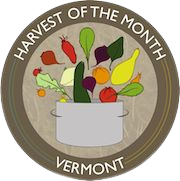Peppers
Peppers are native to Central and South America. They are among the first plants to be cultivated there. Pepper seeds dating back to 5000 B.C. have been discovered in Mexico. Because the pepper plant is very adaptable, many different areas of the world are able to cultivate them.
Downloads (PDF):
Slide show:
Reading List:
» A Fruit is a Suitcase for Seeds, by Jean Richards
Articles:
Peppers have traveled the globe, not by accident, but through the hands of people who valued their flavor, resilience, and beauty. Their seeds are small but powerful—easy to save, long-lasting, and capable of thriving in many climates. Because of this, peppers were carried in pockets and pouches, traded across continents, and shared among communities. As people moved, they brought these seeds with them, planting not just food, but trailing thread connecting them to where they came from. This is part of the ancient relationship between plants and people—a relationship built on care, reciprocity, and trust. One way we honor that bond is by saving seeds, planting them again each year, and allowing the plants to nourish us in return.
Seed saving is also an act of liberation. When we maintain heirloom varieties, we preserve biodiversity—in the colors, shapes, and flavors of our food, but also in the wealth of nutritious, resilient plants tied to history, ancestry, and culture. Saving seeds is a way to keep knowledge alive, protect against crop loss due to disease or climate change, and maintain independence from industrial seed systems that limit access and control. Each seed carries with it a memory of where it came from—and a promise of what it can become.
Today, many organizations are dedicated to maintaining this respectful relationship with plants, taking care of their seeds and saving them in seed banks. Each year, Native American seed savers like the Meskwaki Food Sovereignty Initiative, the Cherokee Nation Seed Bank, and the Indigenous Seed Keepers Network are protecting their traditions, stories, and plant varieties. Practicing and sharing knowledge passed down by their elders and relatives, seed savers are doing important work by growing heirloom plants and saving their seeds.
Watch a short documentary about seed saving in the Hudson Valley.


